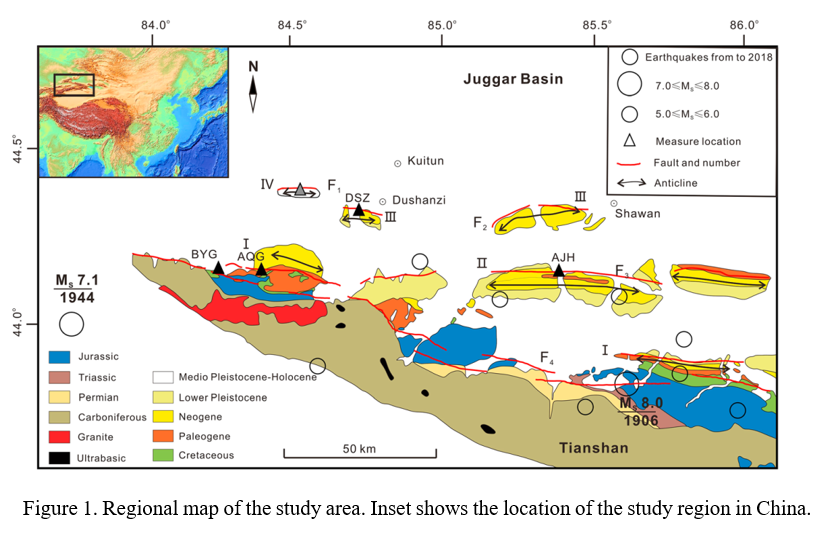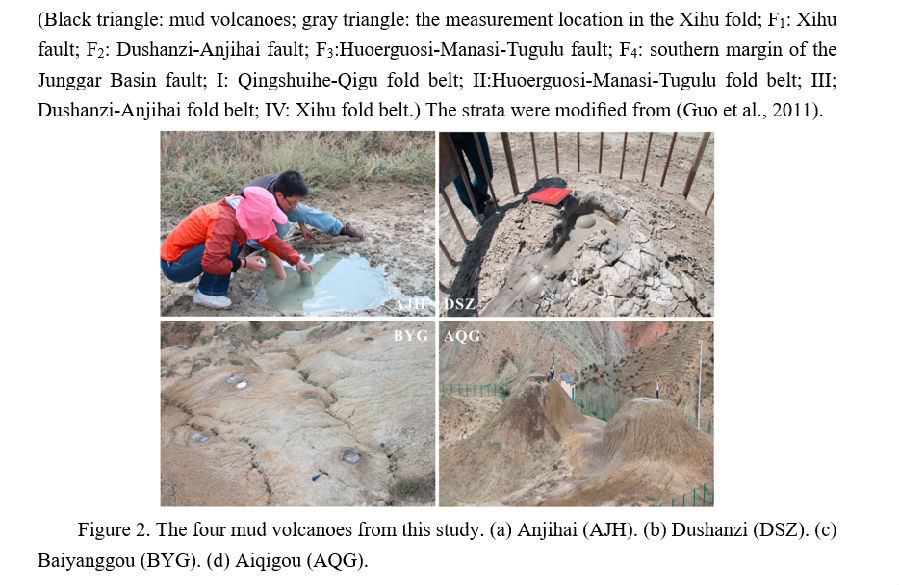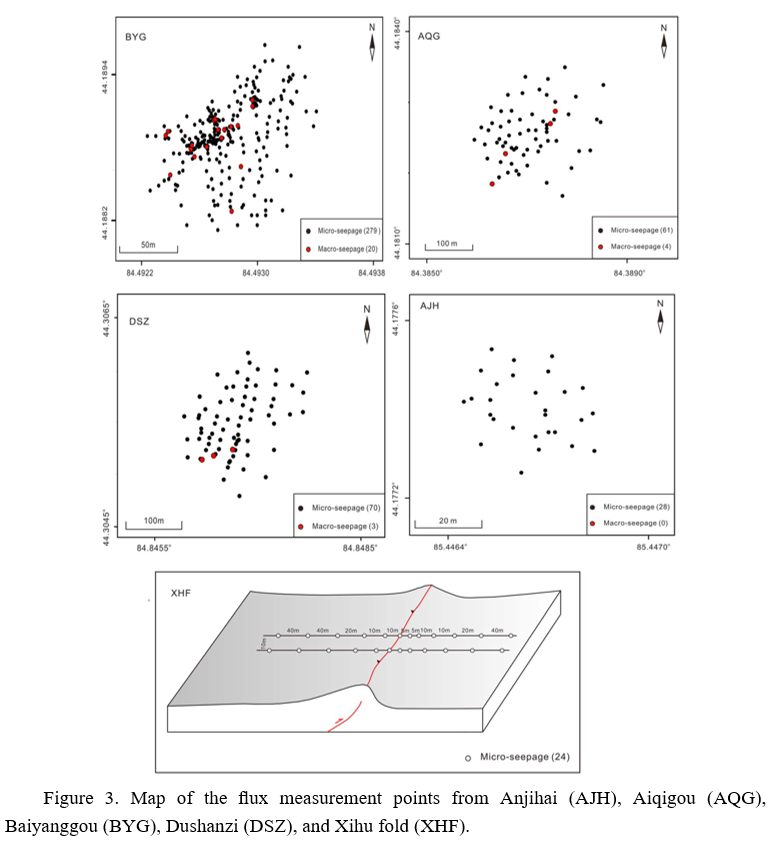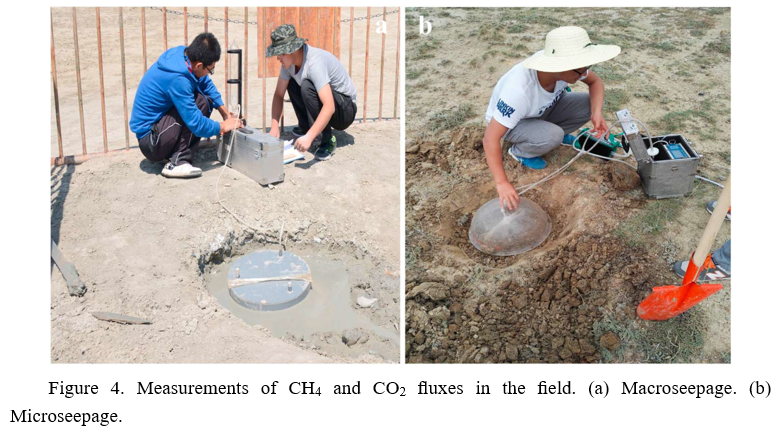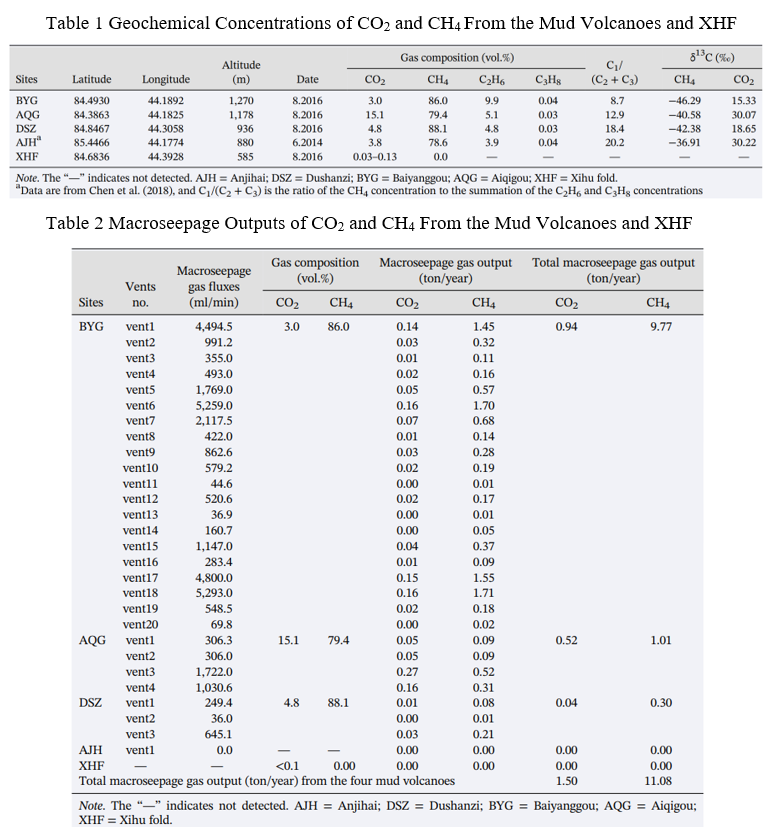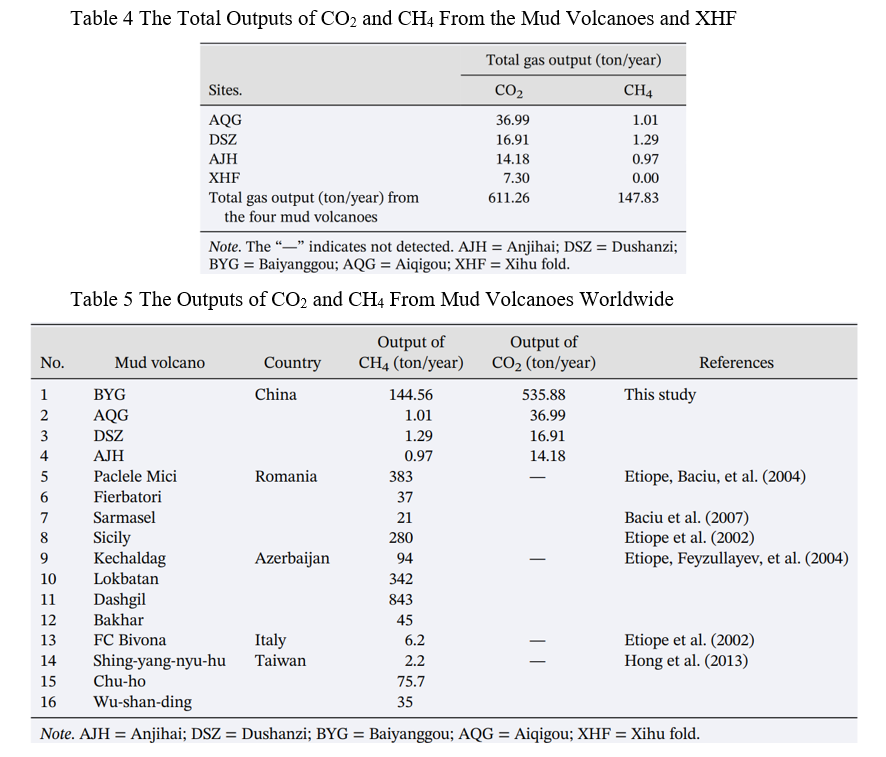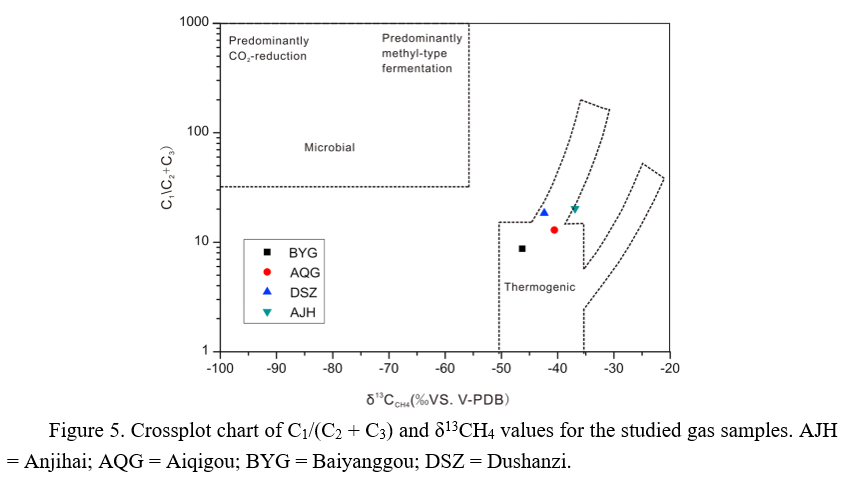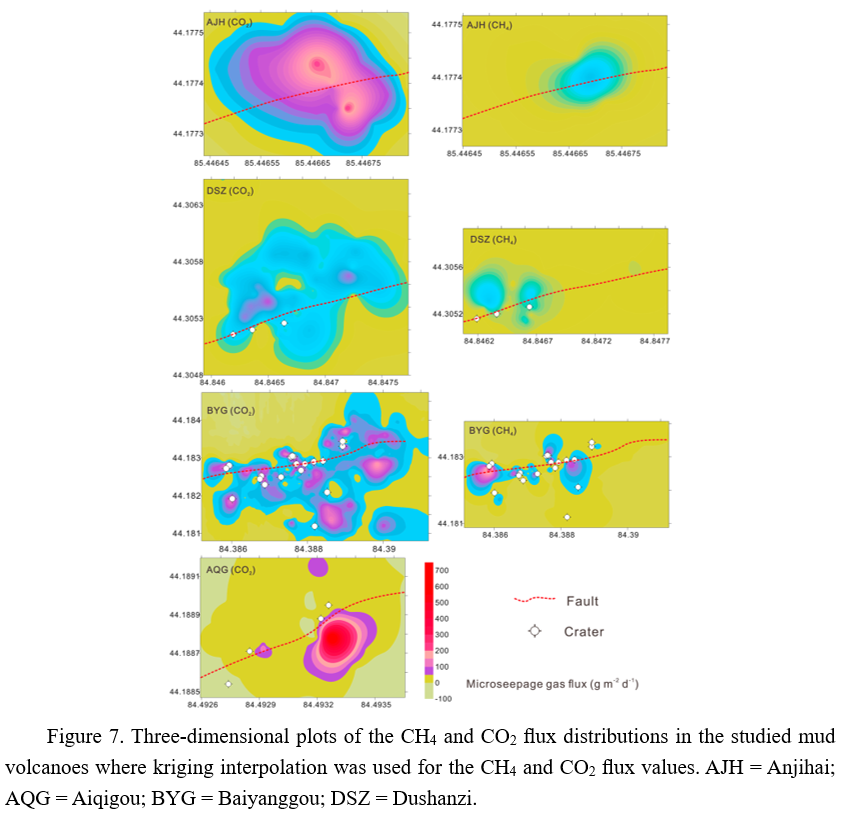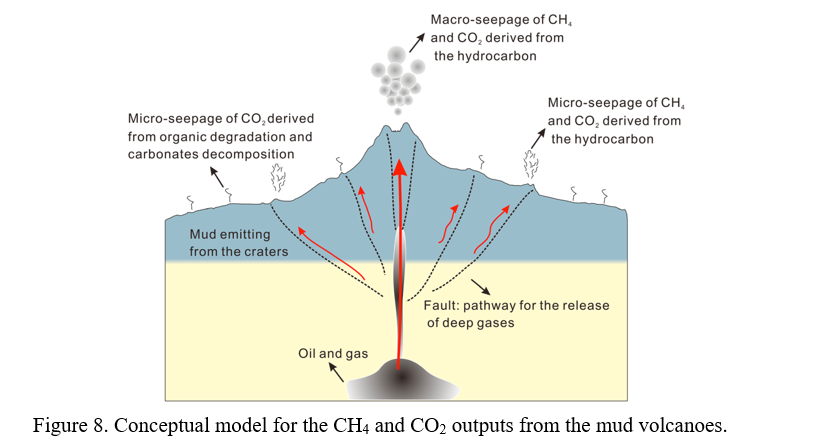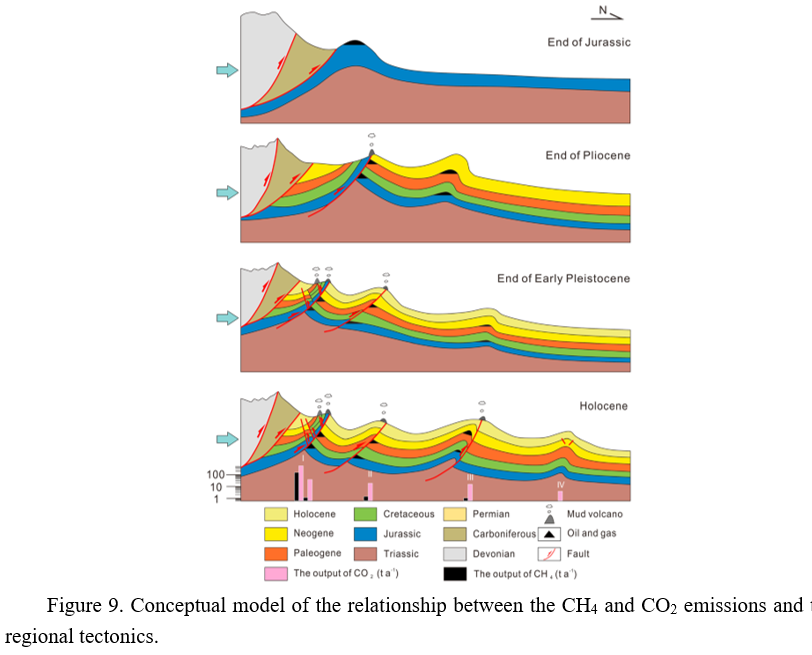ABSTRACT: The concentrations, isotope ratios, and fluxes of CH4 and CO2 from mud volcanoes measured during a field survey on the southern margin of the Junggar Basin are reported. The origins and outputs of CH4 and CO2 from the four mud volcanoes are assessed, and the relationship between the characteristics of degassing and regional tectonics is discussed. The geochemical data indicate that thermogenic gases derived from the hydrocarbon reservoirs beneath anticlines could be the main source of the CH4 emitted from the mud volcanoes and that hydrocarbon degradation by microbes and carbonate decomposition could be the primary contributors to CO2 emissions from the soil in and around the mud volcanoes. Microseepage was the main mode of release for CH4 and CO2 from the mud volcanoes. The total CH4 output from the mud volcanoes was 147.83 ton/year, comparable to that from mud volcanoes elsewhere. The total output of CO2 from the mud volcanoes was 603.96 ton/year, which suggests that more attention should be paid to CO2 from mud volcanoes. The CH4 and CO2 outputs from the mud volcanoes, and from the Xihu fold in the four anticlines, decreased from south to north. This observation is consistent with the intensity of regional tectonic activity, which weakens from south to north. The results suggest that regional compression is the major triggering mechanism for CH4 and CO2 emissions from the mud volcanoes.
